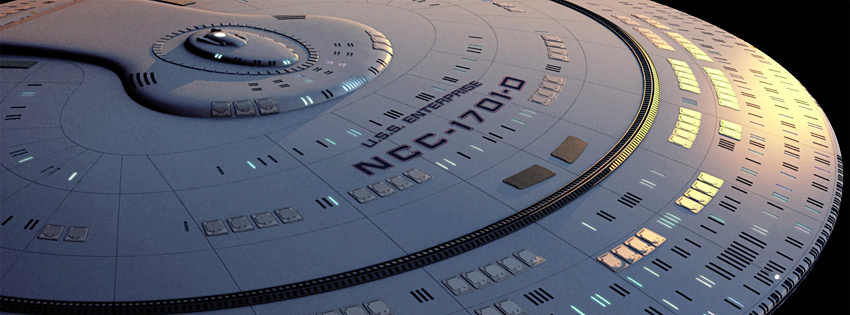When you hear someone talking about the Cardassian border, or the Klingon border, there is no set line, with the Federation on one side, and the Klingons or Cardassians on the other. Instead, borders are three-dimensional quasi-defined regions of space. Areas between certain star systems usually become known as border regions. Good border regions are vast tracks of nothingness that buffer the empires adjacent to each other. After all, empty space has very little value to anyone; it is the habitable planets that define the controlled territory of empires.
So, how does the Federation defend its borders with the Klingons, the Romulans and the Cardassians? Well, the Federation and her member planets defend their star systems with regional fleets, carefully placed sensor buoys between star systems, and small patrol ships that remain in constant contact with those sensor buoys. In a way, planets become like the territorial islands in an ocean, while the empty areas of space are the “international waters” between them.
But doesn’t this allow an enemy to just warp through the vast emptiness between star systems? Theoretically, yes. However, when your opponent’s planets are heavily defended, open space is vast and holds no value, your invading supply lines become long and vulnerable, sensors are completely useless at warp (so you don’t know what awaits you at your destination), and communication of any kind cannot travel faster than the speed of light, you tend to keep your resources close, and conduct planet-to-planet wars. There just isn’t any incentive – or safety -- in long-distance invasions.
In the Federation, most member planets maintain their own defense fleets, with the ships of the military-based Federation Port Guard providing additional support. Port Guard ships also patrol the marker buoys between controlled systems, and coordinate sensor data with Starfleet vessels, Federation trade ships, and other service vessels operating in the area.
While a wall on a planet might delineate a national border, the true “borders” of the Federation are maintained by the vast emptiness of space, and the limits of vital technology for all invaders who might try to pass through it.
-Lieutenant Sam Archer
-------------------------------------------------------------
June 6, 2364 -- (Original Devron Timeline)
